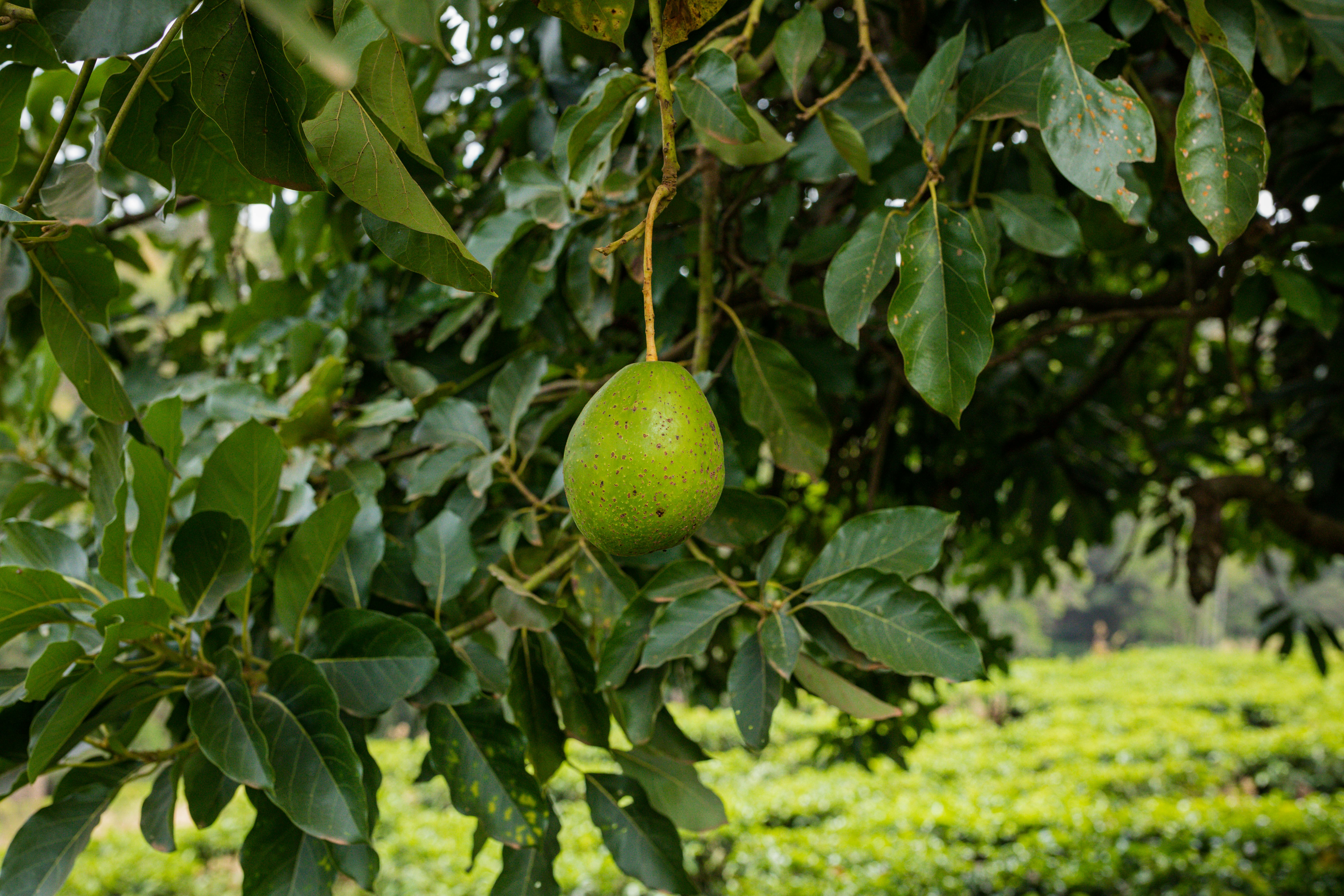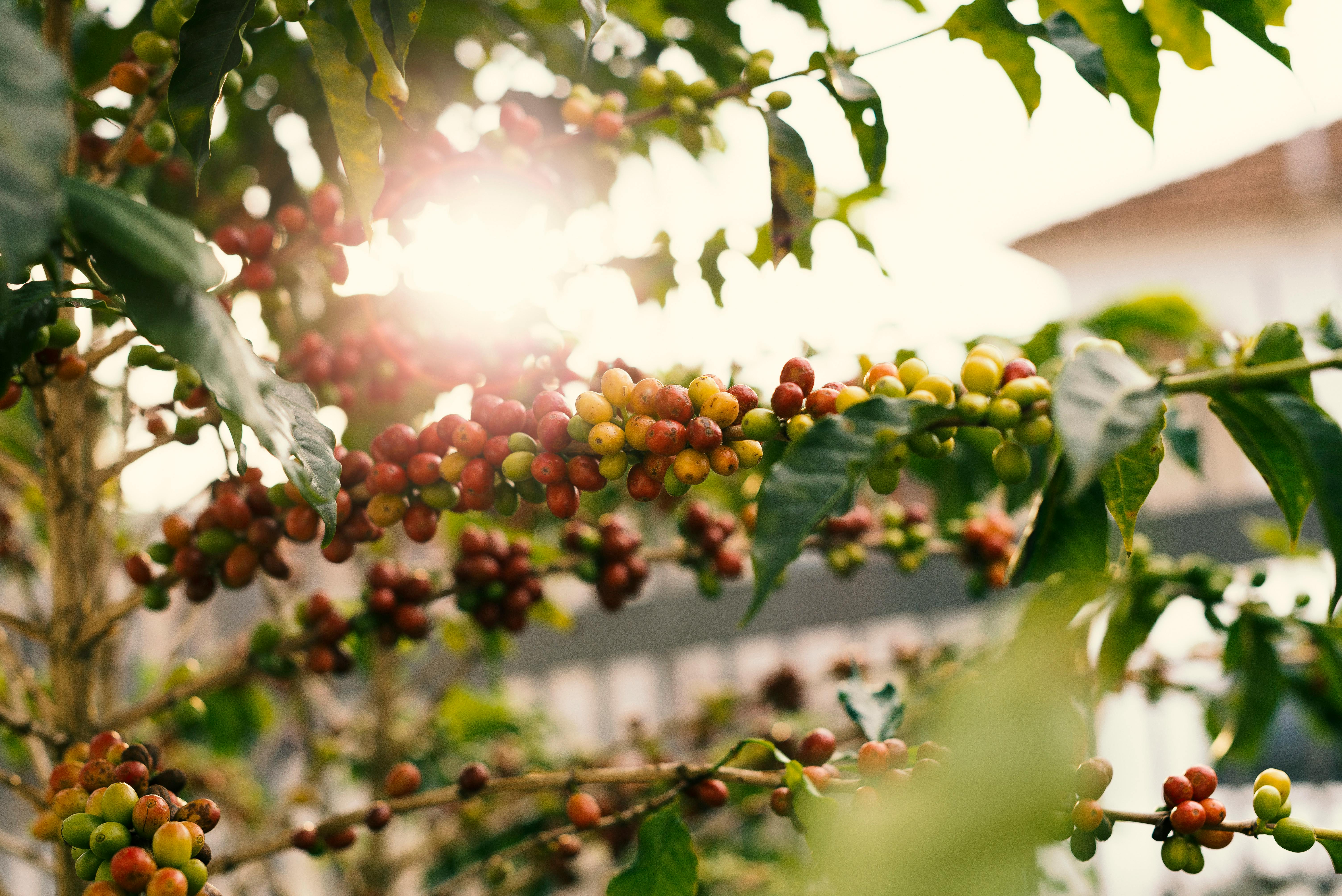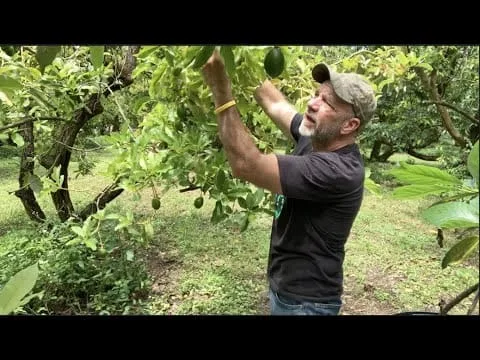Avocado is a popular fruit with many nutritional benefits, and having an avocado tree in your backyard is a great way to enjoy fresh avocados. But how long does it take for the tree to produce fruit? This article will provide an overview of the timeline for when you can expect your avocado tree to start producing fruit. Additionally, we’ll discuss some helpful tips and tricks for caring for your avocado tree in order to help it reach its full potential.It typically takes 4-6 years for an avocado tree to produce fruit. However, this time frame can vary depending on the variety and climate where the tree is growing.
Climate
Avocado trees are very sensitive to climate, which is one of the most important factors in determining the amount of fruit they produce. Avocado trees grow best in mild climates with temperatures ranging from 55-75°F (13-24°C), and they will not produce fruit if temperatures drop below 55°F (13°C). They also require high humidity levels and plenty of water, so if either of these conditions is not met, it can reduce the amount of fruit produced.
Soil
The type of soil that an avocado tree grows in can also have an impact on its fruit production. Avocado trees prefer nutrient-rich, well-draining soil and need to be planted in an area that receives plenty of sunlight and has good air circulation. If the soil is too sandy or clayey, it can cause a decrease in fruit production. Additionally, if the soil is too acidic or alkaline, it can also affect how much fruit the tree produces.
Rootstock
The type of rootstock that an avocado tree is planted on can have a significant impact on its fruit production. Rootstocks are chosen based on their resistance to certain diseases and pests, as well as their ability to produce a high yield of quality fruits. If the wrong rootstock is chosen for a particular variety of avocado tree, it could result in a decrease in yield or poor quality fruits.
Pruning
Pruning an avocado tree correctly is essential for maintaining a healthy tree and enhancing its fruit production capabilities. Pruning helps to remove old, diseased branches as well as open up the canopy to allow increased sunlight penetration into lower branches which helps with fruit production. Pruning should be done regularly throughout the growing season but should be done carefully so as not to damage any new growth or buds.
Fertilizer
Applying fertilizer regularly will help ensure that an avocado tree receives all of the necessary nutrients for optimal health and maximum fruit production. Fertilizers are generally applied during early spring before any new growth appears and then again during mid summer when most fruits are beginning to form. It’s important to use only fertilizers specifically formulated for avocados since other types may contain too much nitrogen which can cause leaf burn or reduced yields.
Location
When planting an avocado tree, one of the most important considerations is location. The ideal site for an avocado tree is a sunny spot with plenty of space for the tree to grow. It should also be protected from strong winds. The soil should be well-drained, as avocados do not like wet feet. The pH level should be around 6.0 to 6.5, and the soil should have plenty of organic matter such as compost or manure.
Variety
When choosing a variety of avocado tree, it is important to consider how it will grow in your climate zone. Some varieties are better suited to cooler climates while others thrive in warmer areas. It is also important to consider the type of fruit you want from your tree – some varieties produce larger fruits than others.
Pollination
Most avocado trees are self-pollinating, meaning they do not need another tree for pollination in order to produce fruit. However, it may be beneficial to plant two trees near each other so that they can cross-pollinate and increase the yield of fruit produced by each tree.
Care
Avocado trees require regular care and maintenance in order to remain healthy and productive. They need regular watering during hot weather and fertilization twice a year with a balanced fertilizer such as 10-10-10 or 8-8-8. Pruning is also necessary to keep the size of the tree under control and promote good airflow through the branches and leaves.
Best Climate Conditions for Avocado Trees
Avocado trees thrive in warm, tropical climates with temperatures between 55 and 80 degrees Fahrenheit. They prefer humid environments where the air is moist and there is plenty of rainfall. Avocados need full sunlight to produce fruit, so they should be planted in an area that receives at least 8 hours of direct sunlight each day. The ideal soil for avocado trees is well-draining and high in organic matter, such as compost or manure. The soil’s pH should be slightly acidic, between 6.0 and 6.5. Avocados also require good air circulation to help prevent fungal diseases, so they should not be planted too close together.
Avocado trees can tolerate some cold weather, but temperatures below 40 degrees Fahrenheit can cause damage to the flowers or fruit. Prolonged cold spells can even kill the tree. If you live in a cooler climate, it’s best to grow your avocados in containers that can be moved indoors during winter months. When planting avocado trees outdoors, it’s important to provide them with adequate protection from wind and frost by planting them near buildings or walls.
In summary, the best climate conditions for growing avocados are warm temperatures between 55 and 80 degrees Fahrenheit, plenty of direct sunlight (at least 8 hours per day), moist air with ample rainfall (or irrigation), well-draining soil high in organic matter, slightly acidic soil (pH 6.0 – 6.5) and protection from wind and frost. With these environmental requirements met, you will have healthy avocado trees that will yield a plentiful harvest!
Varieties of Avocado Trees for Fruit Production
Avocados are a popular fruit, known for their creamy texture and healthy fats. They are grown in tropical and subtropical climates, and can be harvested year round in some regions. While there are many varieties of avocado trees, some are better suited for fruit production than others. Here are some of the most recommended avocado varieties for fruit production:
The Hass avocado is one of the most popular varieties and is widely grown in California. It produces a large, dark-skinned fruit with a creamy texture and nutty flavor. The Hass tree is drought tolerant and can tolerate temperatures as low as 25°F (-4°C).
The Bacon avocado is an early-maturing variety that produces a medium-sized fruit with smooth, thin skin. It has a buttery texture and mild flavor. The Bacon tree is cold hardy and can tolerate temperatures as low as 22°F (-5°C).
The Fuerte avocado is an early to mid-season variety that produces medium-sized fruits with a thin, green skin and smooth texture. It has a nutty flavor and stores well after harvest. The Fuerte tree is cold hardy and can tolerate temperatures as low as 24°F (-4°C).
The Gwen avocado is an early to mid-season variety that produces large, dark green fruits with smooth skin and creamy texture. It has a nutty flavor and stores well after harvest. The Gwen tree is cold hardy and can tolerate temperatures as low as 26°F (-3°C).
The Lamb Hass avocado is an early to mid-season variety that produces large fruits with dark green skin that turns black when ripe. It has a buttery texture and nutty flavor, stores well after harvest, and ripens quickly on the tree. The Lamb Hass tree is cold hardy and can tolerate temperatures as low as 28°F (-2°C).
These varieties of avocados are among the most recommended for fruit production due to their high yields, good flavor, easy storage capabilities, cold hardiness, and drought tolerance. When selecting an avocado variety for your garden or farm, consider these recommended options to ensure you get the best results from your crop!

Proper Care and Maintenance of an Avocado Tree
Adequate care and maintenance is essential for an avocado tree to produce a healthy crop of avocados. Proper care includes providing the right amount of water, fertilizing, pruning, and protecting the tree from pests and diseases. Here are some tips for proper care and maintenance of an avocado tree.
Watering: Avocado trees need consistent water to stay healthy. When the tree is young, water it two or three times a week with a slow-running hose or drip irrigation system. As the tree matures, reduce watering to once or twice a week in summer and every other week in winter. Be sure to water deeply enough to moisten the entire root zone.
Fertilizing: An avocado tree needs fertilizer to ensure healthy growth. Use an organic fertilizer such as compost or manure when planting and apply a balanced fertilizer once every six months during the growing season. Be careful not to over-fertilize as this can damage the roots.
Pruning: Pruning helps keep an avocado tree healthy by removing dead or diseased branches and controlling its size and shape. Prune during late winter when the tree is dormant, removing any branches that are weak or broken. Prune selectively, removing only a few branches at a time so as not to stress the plant.
Protection: Protect your avocado tree from pests and diseases by using natural pest repellents such as neem oil or garlic spray, hand-picking pests such as aphids off the leaves, and keeping debris away from the base of the tree. Also make sure to inspect your tree regularly for signs of disease such as wilting leaves or discolored bark.
By following these tips for proper care and maintenance of an avocado tree you can ensure that it produces a healthy crop of avocados each year.
Step 1: Choose the Right Variety
Selecting a variety of avocado tree that is suitable for the local environment is an important first step to maximize fruit production. Consider the climate and growing conditions in the area, as different varieties may perform better than others. Choose a variety that is known to produce a high yield of quality fruit. Also, look for trees with disease resistance, since this will help reduce the need for chemical treatments and promote healthy growth and production.
Step 2: Plant in an Ideal Location
When planting an avocado tree, it is important to choose a location with plenty of sun and good drainage. Avocado trees require at least six hours of direct sunlight per day to thrive, so make sure to select a spot with plenty of light. It’s also important to ensure that water can drain away quickly from the roots, so avoid areas where water pools around the tree or accumulates after heavy rains.
Step 3: Prune Regularly
Regular pruning is essential for promoting healthy growth and maximizing fruit production in an avocado tree. Pruning should be done once or twice per year in late winter or early spring to remove dead or diseased branches as well as any crossing branches that could interfere with air circulation. This will help promote strong growth and will also provide better access for spraying insecticides or fungicides.
Step 4: Fertilize Appropriately
Avocado trees need regular fertilization in order to stay healthy and produce a high yield of quality fruit. Use a balanced fertilizer formulated specifically for avocado trees at least twice per year, once in early spring and again in mid-summer. Make sure not to over-fertilize as this can lead to leaf burn or other problems.
Step 5: Water Adequately
Avocado trees need plenty of water in order to thrive and produce fruit, but they are also susceptible to root rot if they are overwatered. Water deeply but infrequently, making sure that the soil stays moist but not soggy. During periods of drought or extreme heat, water more often if necessary.
By following these steps, you can maximize your avocado tree’s potential for producing high quality fruit.
Common Pests and Diseases Affecting Avocado Trees
Avocado trees are susceptible to many types of pests and diseases, which can affect the health of the tree and yield of fruit. Common pests and diseases that affect avocado trees include root rot, mealybugs, scale insects, thrips, fungus gnats, aphids, mites, caterpillars, and avocado seed moths.
Root rot is a fungal disease caused by soil-borne fungi. It causes the roots to become weak and unable to absorb water and nutrients properly. Symptoms include yellowing leaves, wilting branches, discoloration of the bark and eventual death of the tree. To prevent root rot from occurring it is important to provide proper drainage for the soil around the tree.
Mealybugs are small insects that feed on sap from the leaves and stems of plants. They produce a sticky substance known as honeydew which attracts ants and encourages fungal growth on plants. Mealybugs can be controlled with insecticidal soaps or horticultural oils applied directly to the affected areas.
Scale insects are small pests that feed on sap from leaves and stems which can cause stunted growth or even death of the tree if left untreated. Scale insects can be controlled with insecticides or horticultural oils applied directly to affected areas.
Thrips are tiny flying insects which suck sap from leaves causing them to turn yellow or brown in color. Thrips can be controlled with insecticides such as pyrethrin or neem oil applied directly to affected areas.
Fungus gnats are small flies that lay their eggs in the soil near plant roots where they hatch into larvae that feed on organic matter in the soil. Fungus gnats can be controlled with beneficial nematodes applied directly to affected areas or yellow sticky traps placed near plants to attract adult gnats away from plants.
Aphids are small sucking insects that feed on sap from leaves causing them to curl up and distort in shape. Aphids can be controlled with insecticidal soaps or horticultural oils applied directly to affected areas or by introducing beneficial insects such as ladybugs into your garden which will feed on aphids naturally.
Mites are tiny spider-like creatures that suck sap from leaves causing them to become discolored and distorted in shape. Mites can be controlled with insecticidal soaps or horticultural oils applied directly to affected areas or by introducing beneficial predatory mites into your garden which will feed on other pest mites naturally.
Caterpillars are common pests of avocado trees which feed on leaves causing them to become ragged in appearance due to their chewing habits. Caterpillars can be controlled with insecticidal soaps or horticultural oils applied directly to affected areas or by introducing beneficial predatory wasps into your garden which will feed on caterpillars naturally .
Avocado seed moths are small moths which lay their eggs inside avocado fruits causing them to rot prematurely before they reach maturity . Avocado seed moth infestations can be prevented by wrapping each fruit individually in paper bags before they reach maturity . This will prevent adult moths from laying eggs inside fruits .

Conclusion
Avocado trees are a great way to get fresh and delicious fruit from your own backyard. It can take anywhere from 3-5 years before an avocado tree produces fruit, but with proper care and attention, it is possible to have a healthy and fruitful tree in no time. When planting an avocado tree, it is important to remember the needs of the tree such as proper sunlight, water, and soil type as well as the location of the tree. With good maintenance and some patience, you can enjoy delicious avocados year-round.
In conclusion, growing an avocado tree is a rewarding experience that can provide you with fresh avocados for years to come. With the right care and attention, your avocado tree will produce fruit in no time at all. So why wait? Start growing your own avocado tree today!



